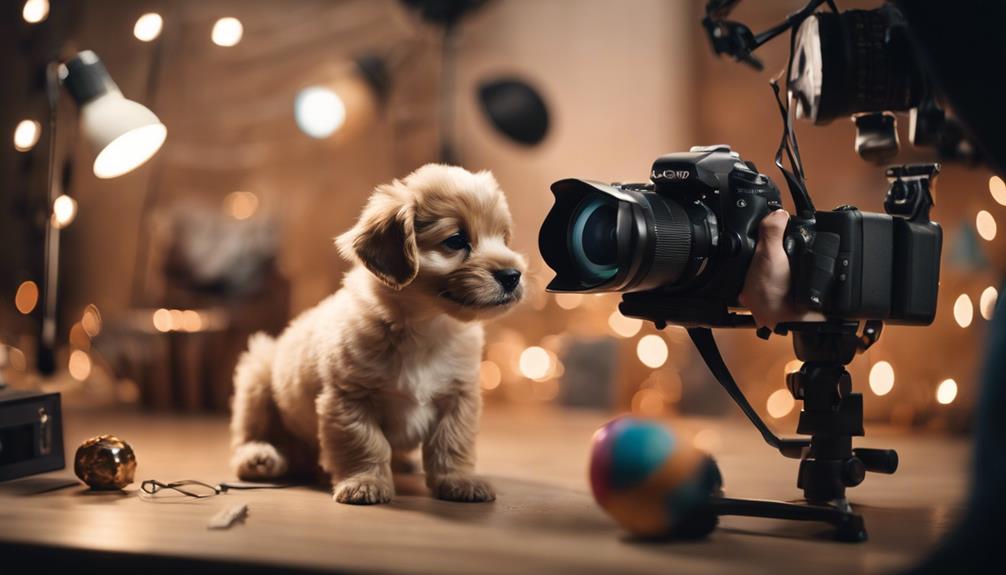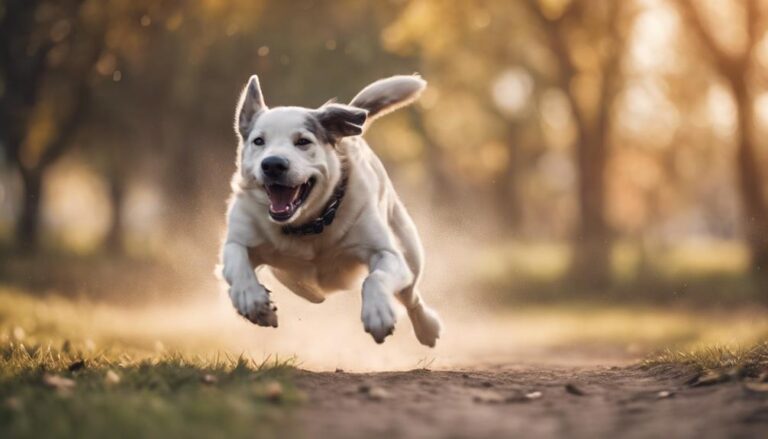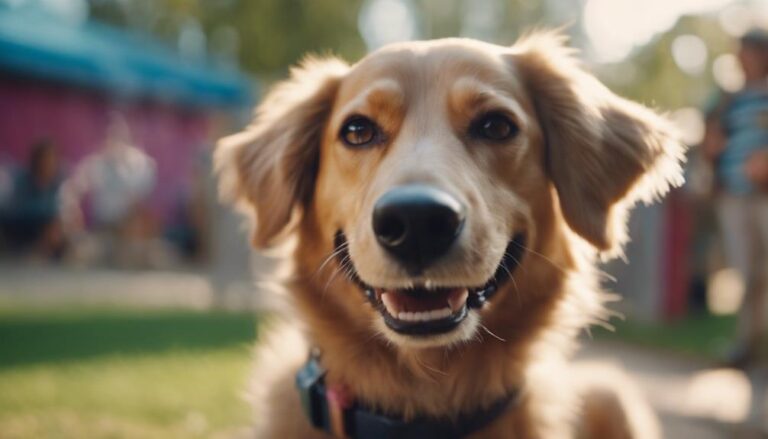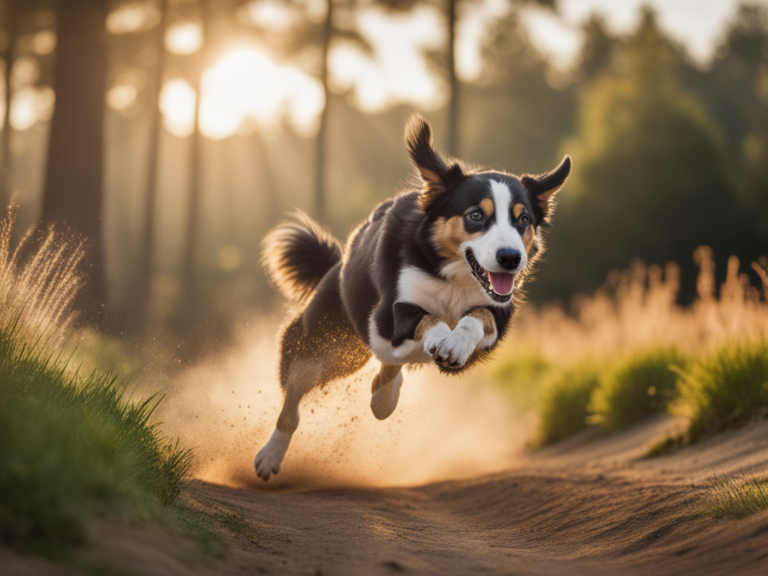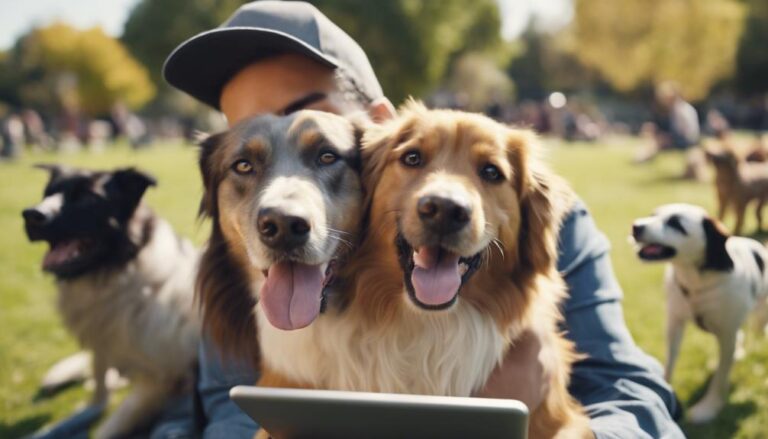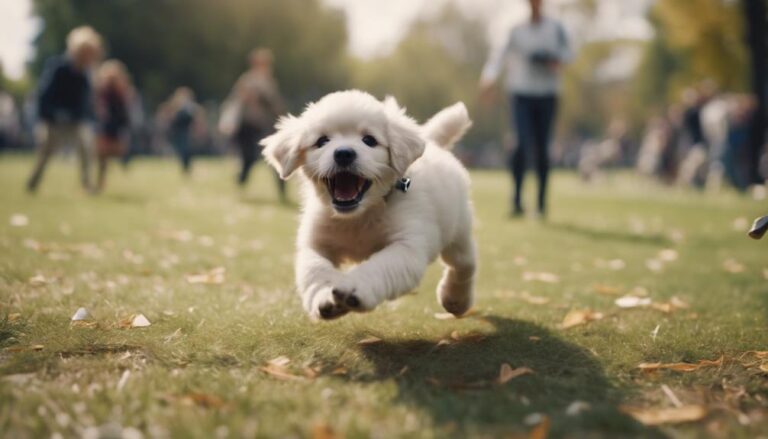Begin a rewarding pet photography career with specialized training courses. Acquire skills, creative inspiration, and portfolio guidance. Master lighting, composition, and editing techniques. Learn from pros, study animal behavior, and develop your brand. Network, build a stunning portfolio, and invest in quality gear. These courses establish a solid foundation. You're in for a fulfilling journey capturing furry companions' moments.
Benefits of Pet Photography Courses
By enrolling in pet photography courses, you can gain valuable skills and knowledge to kickstart your career capturing the beauty of animals. These courses provide a platform for creative inspiration and artistic development. Through learning different techniques and styles, you can enhance your creativity and develop a unique vision for capturing stunning images of pets.
Moreover, pet photography courses offer guidance on portfolio building and developing strong client relationships. Building a strong portfolio is vital for showcasing your work and attracting potential clients. These courses can teach you how to curate your portfolio effectively, highlighting your best work and demonstrating your style and expertise. Additionally, learning how to manage client relationships is essential for a successful pet photography career. Understanding how to communicate with clients, meet their expectations, and deliver high-quality results can set you apart in the competitive photography industry.
Technical Skills Development
To excel in pet photography, honing your technical skills is essential in capturing the essence and personality of animals in your shots. Mastering lighting techniques is vital to highlight the features and expressions of pets effectively. Natural light can create a warm and inviting atmosphere, while artificial lighting allows for more control over the intensity and direction of light. Understanding how to manipulate light will enhance the quality of your images and bring out the best in your furry subjects.
Composition tips play a significant role in pet photography as well. Framing your shots thoughtfully, considering the rule of thirds, leading lines, and perspective, can elevate the visual impact of your photos. Pay attention to the background and foreground elements to create a harmonious composition that draws the viewer's eye to the pet.
In addition to capturing images, post-processing and retouching skills are essential for refining your photos. Learning how to edit for color correction, exposure adjustments, and minor touch-ups can transform a good photo into a great one. Develop your skills in editing software to enhance the mood and overall quality of your pet portraits. By honing these technical skills, you can create enchanting and professional pet photos that stand out in the competitive photography industry.
Learning From Professionals
Explore the invaluable insights and expertise offered by seasoned pet photographers to enhance your skills and knowledge in the field. Learning from professionals through mentorship programs can provide you with practical advice, industry tips, and real-world experiences that can greatly boost your pet photography career. These mentorship programs allow you to shadow experienced photographers, gain hands-on experience, and receive personalized feedback tailored to your specific needs and goals.
Engaging with professionals in the pet photography industry can also offer you a wealth of creative inspiration. By observing how seasoned photographers work with different animals, lighting conditions, and settings, you can broaden your artistic vision and develop your own unique style. Professionals can guide you on how to capture the essence of pets, convey their personalities through photographs, and create compelling compositions that resonate with viewers.
Moreover, interacting with established photographers can open doors to new opportunities, collaborations, and networking connections within the pet photography community. Building relationships with professionals can lead to referrals, partnerships, and exposure for your work. So, don't hesitate to seek out mentorship programs and learn from those who have already paved the way in pet photography. Their guidance and creative insights can propel your career to new heights.
Understanding Animal Behavior
Observing and interpreting animal behavior is key to capturing authentic and engaging pet photographs that truly reflect their personalities. Understanding animal psychology and recognizing body language cues will greatly enhance your ability to create stunning images that resonate with pet owners. Here are four essential tips to help you master the art of interpreting animal behavior:
- Study Animal Psychology: Explore the basics of animal psychology to grasp how different species think and behave. Understanding their instincts and natural tendencies will enable you to anticipate their actions and reactions during a photoshoot.
- Observe Body Language Cues: Pay close attention to subtle body language cues such as ear position, tail movement, and eye contact. These non-verbal signals can provide valuable insights into the animal's mood and emotions, helping you adjust your approach accordingly.
- Build Trust and Rapport: Establishing a connection with the animal is vital for capturing genuine expressions and moments. Take the time to bond with the pet before the photoshoot to create a comfortable and relaxed environment.
- Practice Patience and Adaptability: Animals can be unpredictable, so be prepared to adapt to their behavior during the session. Patience is essential when working with pets, allowing you to wait for the perfect shot and adjust your techniques as needed.
Editing Techniques and Software
Enhance your pet photography skills by mastering essential editing techniques and software. When it comes to editing pet photos, color correction and retouching are essential aspects to focus on. Adjusting the colors can make a significant difference in the overall look of your images, bringing out the vibrancy of your furry subjects. Retouching allows you to remove any imperfections or distractions, ensuring that the focus remains on the adorable pets you photograph.
In addition to color correction and retouching, mastering lighting techniques and composition in your editing process is key. Lighting can make or break a photo, so understanding how to adjust and enhance lighting in post-processing can take your pet photography to the next level. Whether it's brightening up a dark image or balancing exposure, having a good grasp of lighting techniques will greatly improve the quality of your final photos. Furthermore, paying attention to composition during the editing phase can help you create visually appealing pet portraits that capture the essence of your furry subjects.
To execute these editing techniques effectively, familiarize yourself with popular editing software like Adobe Lightroom and Photoshop. These tools offer a wide range of features that can aid in color correction, retouching, and overall photo enhancement. By honing your editing skills and utilizing the right software, you can elevate your pet photography to new heights.
Marketing and Business Strategies
When beginning your pet photography career, it's vital to concentrate on branding your services to differentiate yourself in the market. Implementing efficient pricing strategies will help you attract clients while ensuring your business remains profitable. Networking plays a significant role in building a client base and establishing strong relationships within the pet photography industry.
Branding Your Services
To establish a strong brand for your pet photography services, focus on creating a unique identity that resonates with your target audience. Building a recognizable brand can set you apart in a competitive market and attract loyal clients. Here are some key strategies to help you brand your pet photography services effectively:
- Define Your Niche: Identify what makes your pet photography unique and focus on that aspect in your branding.
- Create a Memorable Logo and Visuals: Design a logo and visual elements that reflect your style and appeal to pet owners.
- Consistent Messaging: Guarantee your brand message is consistent across all platforms to build trust and recognition.
- Engage with Your Audience: Interact with clients through social media and other channels to build strong client relationships and showcase your expertise.
Pricing Strategies
Consider implementing flexible pricing strategies to cater to different client budgets and needs in your pet photography business. When deciding on pricing models, conduct a thorough competition analysis to guarantee your rates are competitive yet profitable. Effective client communication and negotiation skills are essential for discussing pricing with potential clients. Be transparent about your pricing structure and the value you provide. Offering various packages or a la carte options can appeal to a wider range of clients. Remember, pricing is not just about numbers; it reflects the quality of your work and the experience you offer. By understanding your market, communicating effectively, and being open to negotiation, you can set prices that benefit both your business and your clients.
Networking for Clients
Engage with local pet-related businesses and organizations to expand your client network and establish partnerships for your pet photography business. Building strong client relationships is vital for receiving referrals and growing your clientele. Here are four key strategies to enhance your networking efforts:
- Attend Pet Events: Participate in local pet expos or adoption events to connect with potential clients and showcase your work.
- Utilize Social Media: Leverage platforms like Instagram and Facebook to share your portfolio, engage with followers, and attract new clients.
- Collaborate with Pet Influencers: Partnering with popular pet influencers can help you reach a wider audience and gain credibility in the pet community.
- Offer Special Promotions: Provide discounts or special packages to incentivize clients to book your services and encourage repeat business.
Networking effectively can lead to a steady flow of clients and business growth.
Building a Portfolio
When building your portfolio, focus on selecting ideal subjects that showcase your skills and style effectively. Capturing a variety of subjects and styles will demonstrate your versatility and creativity to potential clients. Remember, your portfolio is a reflection of your talent and should highlight your best work to make a lasting impression.
Selecting Ideal Subjects
To develop a strong portfolio in pet photography, focus on selecting subjects that showcase a range of personalities and characteristics. When choosing subjects, look for those that allow you to capture genuine emotions and interactions. Here are four key points to contemplate when selecting ideal subjects:
- Variety: Include different breeds, sizes, and ages to showcase diversity.
- Personality: Seek out pets with unique quirks and traits that make them stand out.
- Relationships: Capture pets with their owners or other animals to show bonds.
- Settings: Experiment with shooting in various locations to add depth to your portfolio.
Showcasing Diverse Styles
Incorporate various styles in your pet photography portfolio to showcase the versatility of your work and attract a broader audience. Experiment with diverse backgrounds to add depth and interest to your images. By capturing pets in different settings, such as urban landscapes or nature scenes, you can create a visually compelling portfolio that highlights your creativity. Additionally, explore unique perspectives to bring a fresh angle to your photos. Consider shooting from low angles or incorporating unconventional framing to add a dynamic element to your work. Showing a range of styles and techniques in your portfolio will not only demonstrate your skills but also appeal to a wider range of clients who are looking for distinctive and engaging pet photography.
Equipment and Gear Essentials
Selecting the right camera and lenses is essential for capturing high-quality pet photographs. When delving into the world of pet photography, here are four key equipment and gear essentials to ponder:
- Camera Body: Invest in a DSLR or mirrorless camera with a high resolution and good low-light performance to capture sharp and detailed images of pets in various settings.
- Lenses: Opt for a versatile lens like a 24-70mm or a 70-200mm that allows you to capture both wide-angle shots and close-ups with beautiful bokeh, ideal for highlighting the pet's features.
- Tripod: A sturdy tripod is vital for ensuring sharp images, especially in low-light conditions or when capturing pets that tend to move around a lot. It also helps maintain consistency in composition.
- Memory Cards and Batteries: Always carry extra memory cards to avoid running out of storage space during a shoot. Additionally, make sure to have spare fully charged batteries to prevent disruptions in the middle of a session.
Networking Opportunities
Explore various networking opportunities to connect with other pet photographers and potential clients in the industry. Attending industry events is a great way to meet like-minded individuals, share experiences, and learn from each other. Look out for pet photography conferences, workshops, and trade shows where you can network with professionals, showcase your work, and stay updated on the latest trends and techniques. These events provide a platform to build relationships, collaborate on projects, and potentially gain referrals for new clients.
In addition to physical events, online communities play a significant role in networking for pet photographers. Joining social media groups, forums, and online photography communities can help you connect with a broader audience, share your portfolio, and engage in discussions with fellow photographers. Platforms like Instagram, Facebook, and photography-specific websites offer opportunities to showcase your work, participate in challenges, and interact with potential clients looking for pet photographers.
Networking not only helps you establish connections within the industry but also opens doors to potential collaborations, mentorships, and business opportunities. By actively participating in industry events and online communities, you can expand your professional network, gain valuable insights, and grow your pet photography business effectively.
Frequently Asked Questions
What Are the Typical Income Opportunities for Pet Photographers After Completing a Training Course?
After completing a training course, pet photographers can expect typical income opportunities to increase. Career advancement often follows as you gain experience and build a strong portfolio. Keep expanding your skills for continued success.
How Can Pet Photography Courses Help With Developing a Unique Photography Style for Capturing Animals?
To develop creativity in capturing animals, explore techniques through pet photography courses. Experiment with lighting, composition, and angles. Discover your unique style by practicing consistently and experimenting with different settings. Embrace trial and error to refine your skills.
Are There Any Specialized Courses Available for Photographing Specific Types of Animals, Such as Birds or Exotic Pets?
For capturing unique shots of specific animals, specialized techniques are key. Bird photography techniques, for example, can enhance your skills in photographing avian subjects. Seek out courses focusing on these areas to elevate your photography game.
Can Pet Photography Courses Provide Guidance on Dealing With Challenging or Uncooperative Animals During a Photo Shoot?
Dealing with aggressive animals or handling uncooperative pets during a photoshoot can be challenging. Proper training courses offer techniques to keep you and the animals safe, ensuring successful and stress-free pet photography sessions.
Are There Any Online or Remote Options Available for Taking Pet Photography Courses for Those Unable to Attend In-Person Classes?
If you're unable to attend in-person classes, online options and remote learning are great alternatives for taking pet photography courses. They provide flexibility and accessibility, allowing you to develop your skills from the comfort of your own home.
Conclusion
Overall, enrolling in training courses for a pet photography career can provide you with a multitude of benefits. From improving your technical skills and learning from professionals to understanding animal behavior and mastering editing techniques, these courses can help you build a successful business. By investing in your education and networking with other professionals in the industry, you can set yourself up for a rewarding and fulfilling career capturing precious moments with our furry friends.

